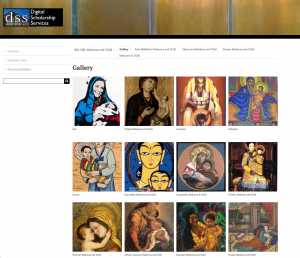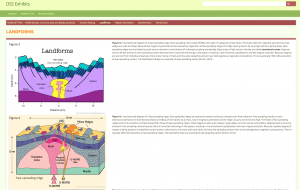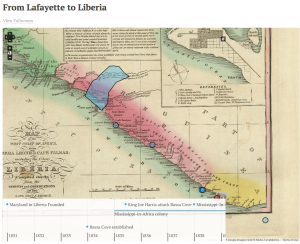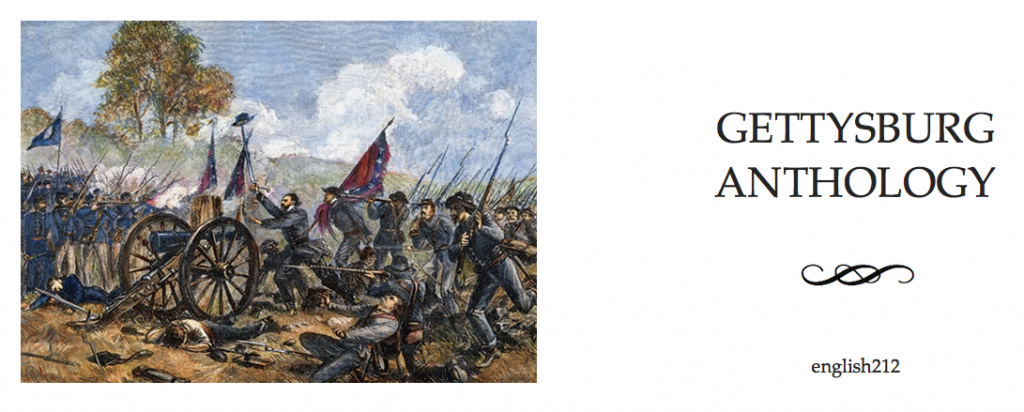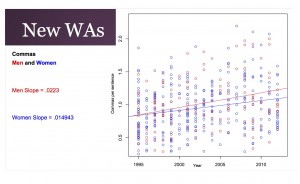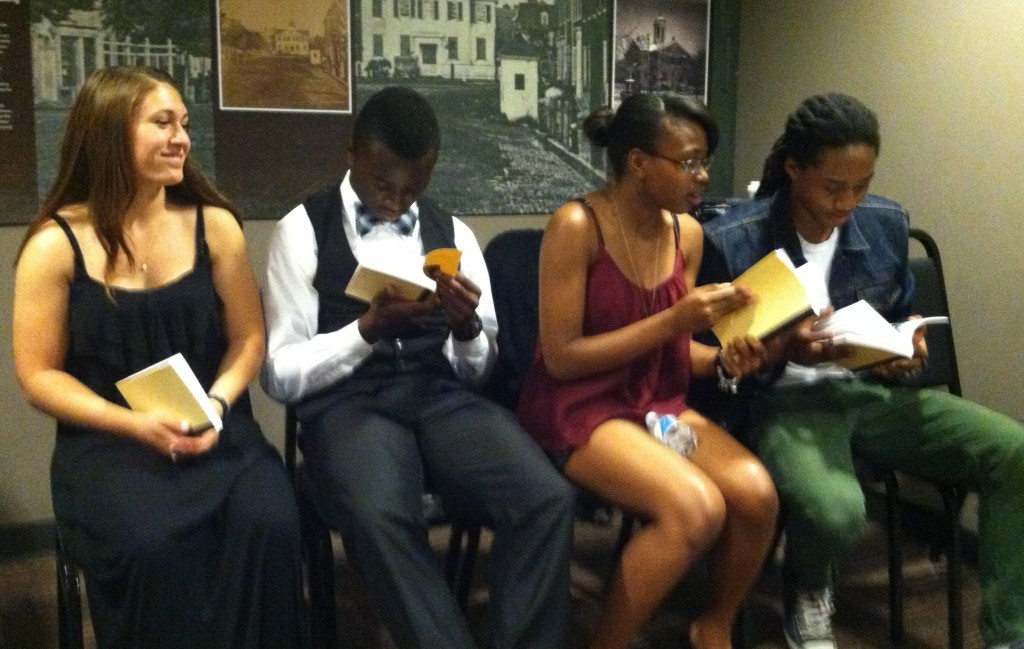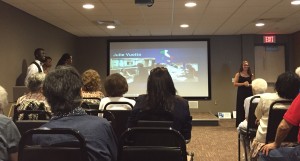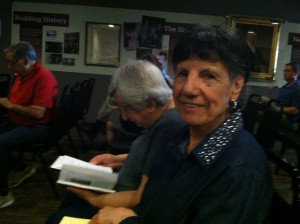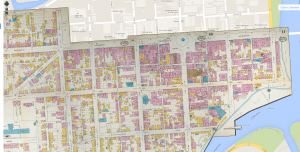This semester saw the successful launch of the Digital Humanities in the Classroom initiative sponsored by Skillman Library and the Mellon Digital Humanities Steering Committee. Grant recipients were asked to convert an assignment or project in their class to one based in the digital humanities. Rather than adding technology for the delivery of content, the grant asks for instructors to use digital methods and technologies to ask new research questions and engage with materials in a new way.
If you’re interested in adding a digital component to your class for next year, we are currently accepting applications for next semester. See our Call for Proposals for the full details.
The call for proposals brought in professors from five different departments ranging from Mathematics to English, each engaging with the tenets of DH from a unique perspective. This week we have had the opportunity to see the results of this initiative as the students turn in their final projects.
Omeka,a digital platform for image collection and image building supported by Skillman Library’s Digital Scholarship Services was primary tool for several of the DH in the Classroom participants. Omeka was ideally suited for Professor Jessica Carr’s Religious Studies class that examined religious imagery and power in religious discourse. For their final projects, students were asked to curate a digital exhibit of images and discuss the significance of their groupings. Building the collection highlighted the influence of curation on the interpretation of images and helped the students to articulate their own perspectives on their objects of study.
Professor Tamara Carley used Omeka in her Geology class in two ways. First her students learned to catalogue and record metadata for their mineral samples. Recording the details of the samples helped them tell the story of the sample and track its movement over time. At the end of the semester, each of her students created final presentations that required using the data collected by the class as whole as evidence for their hypotheses. The Omeka collection became a repository for the class’ knowledge that could then be utilized to build new arguments.
Africana Studies Professor Wendy Wilson-Fall organized data collected in two previous classes to create a new digital exhibition that follows the story of the McDonogh “Brothers” two manumitted slaves that attended Lafayette in the 19th century. Her classes read collections of letters and cultural materials with the assistance of Diane Shaw in Special Collections. This term’s class was able to organize that information previously collected to begin to untangle the social world of both David and Washington McDonogh. The students gained skills in both the collection and visualization of data.
In Professor Chris Phillip’s English class, the digital display of the students work came not in an exhibit, but in a digital publication. Students created their own anthology of Civil War poetry that they compiled as a collaborative ePub. According to Professor Phillips, the process of bringing images, text, and annotations together opened new avenues for analysis for students. “They realized that they could find patterns in the literature they hadn’t anticipated,” he says. “They found new potentials and problems in sharing their work with others, and they realized that there actually is a workflow to producing an e-book—it’s not quite something anyone can do, but with the right tools and a bit of support, they can turn their research into a publication.” The project helped the students to gain authority over their work and gained skills that will transfer to other courses across the curriculum.
In Professor Trent Gaugler’s Mathematical Statistics class, students applied their quantitative skills to a humanities based data set. The class analyzed a set of 775 writing samples from incoming and returning Writing Associates collected between 1995 and 2012. They used the statistical methods they learned in class to compare the essays over time. The project asked students not only to master the learning objectives of the course in order to run the analysis but also how to think about qualitative data in a quantitative manner, breaking down larger questions like, are the essays written in 1995 more sophisticated than those in 2012 into measurable, testable hypotheses.
For example, this graph tracks comma usage in the essays collected from new Writing Associates over time and separated by gender. These students were measuring the sophistication of the writing samples by testing the hypothesis that more commas per sentence would indicate more complex sentences and therefore more sophisticated writing. Interestingly, through a wide range of analyses and hypotheses that the class conducted, their data showed that over the course of nearly 20 years, the writing samples remained remarkably consistent.
Each of these classes found a unique way to engage with the methods and tools of the digital humanities. For more information about these projects or about developing your own classroom project contact Emily McGinn, Postdoctoral Fellow in Digital Humanities, mcginne@lafayette.edu, or see our Call for Proposals for the full details.

